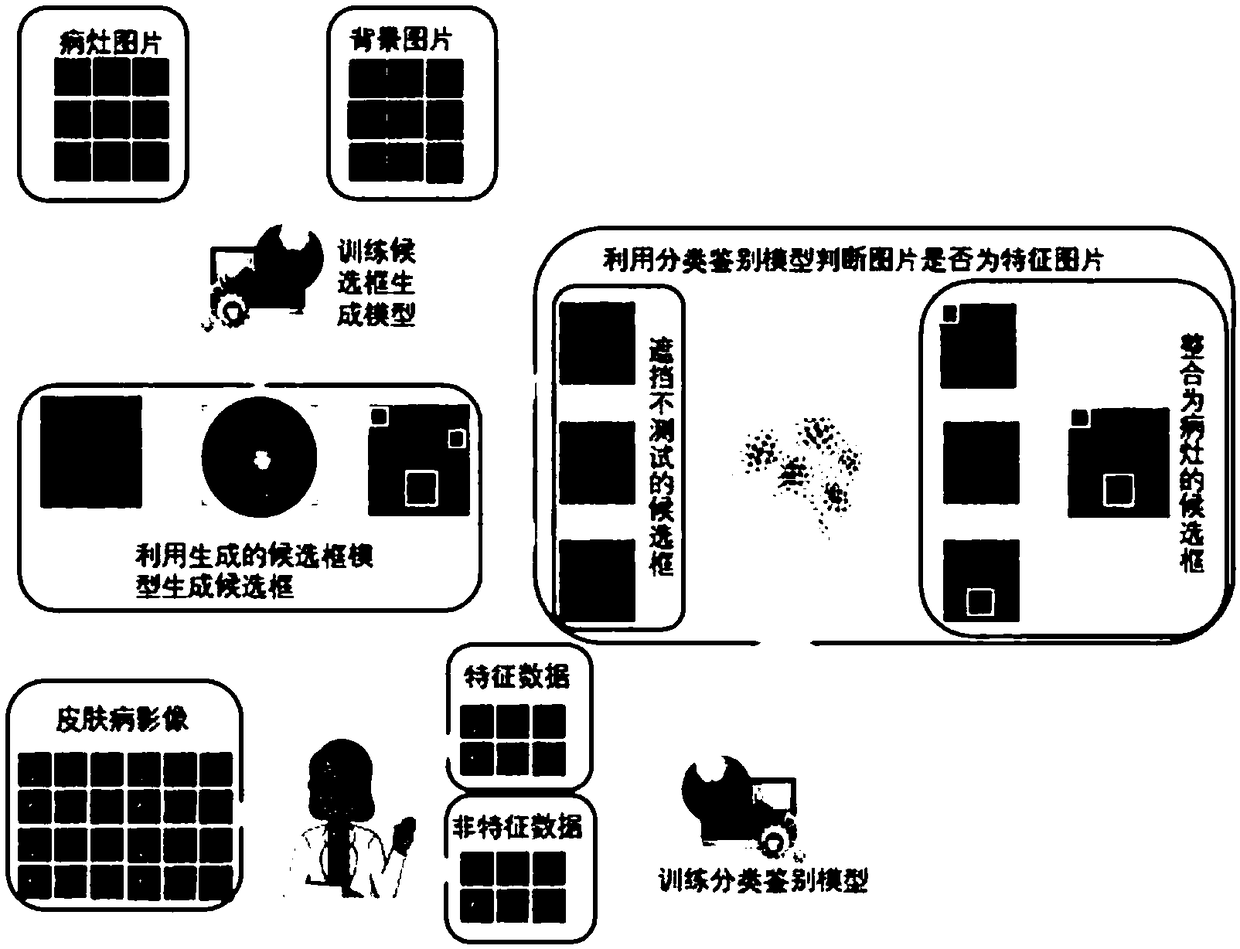Lesion localization method for skin disease image
A technology for skin diseases and lesions, which is applied in the field of lesions localization of skin disease imaging, can solve the problems of lack of medical staff, large amount of data, and low accuracy of lesion localization, and achieve the effect of saving time and energy, improving efficiency, and making diagnosis fast and efficient
- Summary
- Abstract
- Description
- Claims
- Application Information
AI Technical Summary
Problems solved by technology
Method used
Image
Examples
Embodiment Construction
[0022] The invention realizes focus location by training a skin disease identification model and a lesion candidate frame generation model, and then processing pictures containing candidate frames by a template masking method. The training data of the skin disease identification model is obtained by marking a small amount of data by doctors, and is trained using Google inception v3 architecture and migration learning. The training data of the generation model of the candidate frame is to get the lesion area called positive sample and the background image without lesion called negative sample with the help of the doctor, and then use the OpenCV cascade training classifier to train the positive and negative samples. Generate xml documents, and generate lesion candidate boxes through trained xml documents during testing. For the generated lesion candidate frames, we use the template masking method to identify and judge each candidate frame through the identification model one by ...
PUM
 Login to View More
Login to View More Abstract
Description
Claims
Application Information
 Login to View More
Login to View More - R&D
- Intellectual Property
- Life Sciences
- Materials
- Tech Scout
- Unparalleled Data Quality
- Higher Quality Content
- 60% Fewer Hallucinations
Browse by: Latest US Patents, China's latest patents, Technical Efficacy Thesaurus, Application Domain, Technology Topic, Popular Technical Reports.
© 2025 PatSnap. All rights reserved.Legal|Privacy policy|Modern Slavery Act Transparency Statement|Sitemap|About US| Contact US: help@patsnap.com

